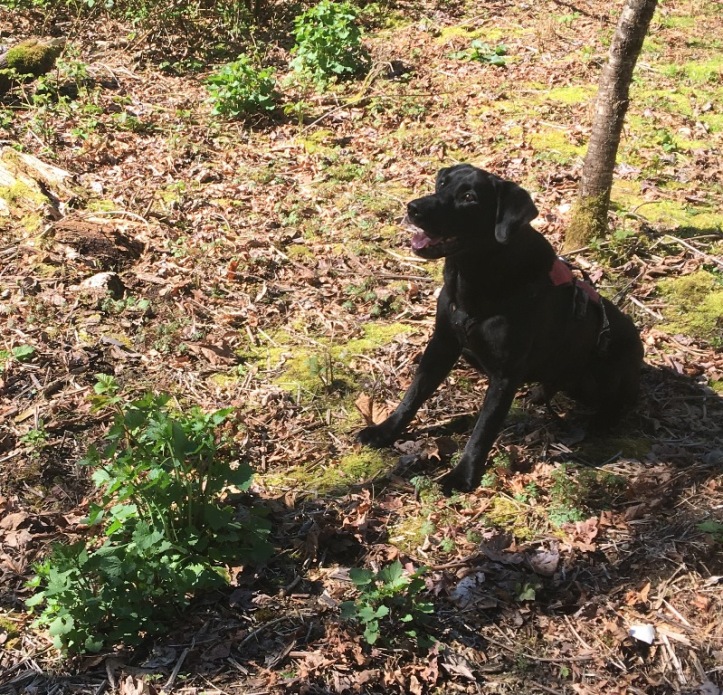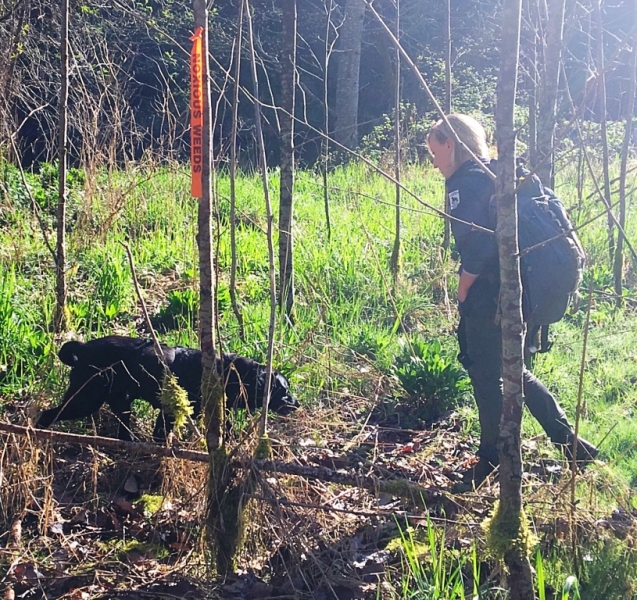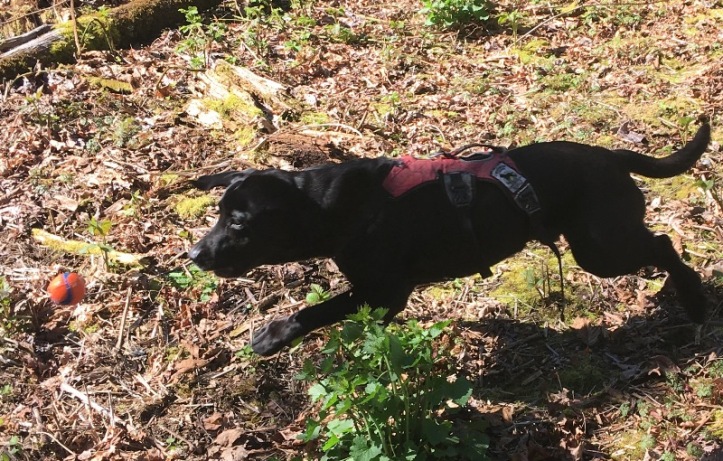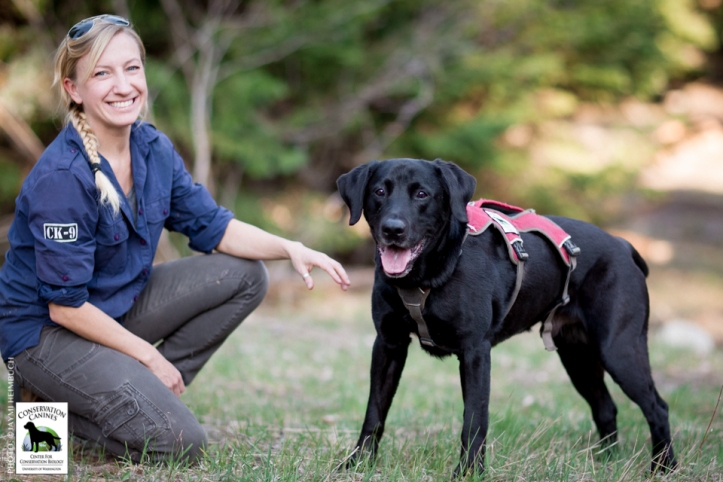Sampson the dog just may be the hero we need in the fight to stop garlic mustard in King County. The King County Noxious Weed Control Program has been working with landowners to eradicate garlic mustard (Alliaria petiolata) since it was listed as a Class A Noxious Weed in 2000. Whenever plants are found they are controlled, but new seedlings emerge every year and plants get harder to find as populations get whittled down. Combine this with how tricky it is to find garlic mustard mixed in with other forest plants and it is clear we need all the help we can get to detect garlic mustard before it sets seed each year.

What if we used a dog to find garlic mustard? Early this spring, King County Noxious Weed Control Program worked with Conservation Canines from the University of Washington’s Center for Conservation Biology to pilot a project using one of their dogs to detect garlic mustard in several known infestations within King County.

Sampson and his handler Julianne Ubigau usually work in remote, backcountry settings locating wildlife scat for study by various conservation programs. This pilot project is the first time Conservation Canines has trained one of their detection dogs to target a plant species. The pilot was three days long. We visited areas on the Cedar River in Maple Valley, Coal Creek in Bellevue, and Golden Gardens Park in Seattle.

Sampson was a quick study at locating garlic mustard. He was especially good at finding tiny seedlings under leaves and other detritus. He moved through the sites in an organic way, picking up odors off the swirling air. If an area warranted a closer search, Julie would guide him with gestures and words of encouragement to slow down and inspect more closely. When Sampson would find his target, he would sit (although it was more of a crouch at times he was so excited) and wait for Julie to confirm his findings. Once confirmed Sampson would get the ultimate reward, his ball.

By the third day of the pilot, Sampson really started to click with locating the garlic mustard. Usually Sampson and his handler would have about a week to familiarize themselves with the target species. While this pilot was short, it seems as though there is real potential to use detection dogs as part of our integrated pest management tool kit. King County Noxious Weed Control Program and Conservation Canines are currently brainstorming about how to refine what was learned from this pilot project, and hopefully partner again in the future. For more information about the pilot project, contact Maria Winkler or Sayward Glise. (Editor note: thanks to Sayward Glise for contributing the story and photos for this article).
